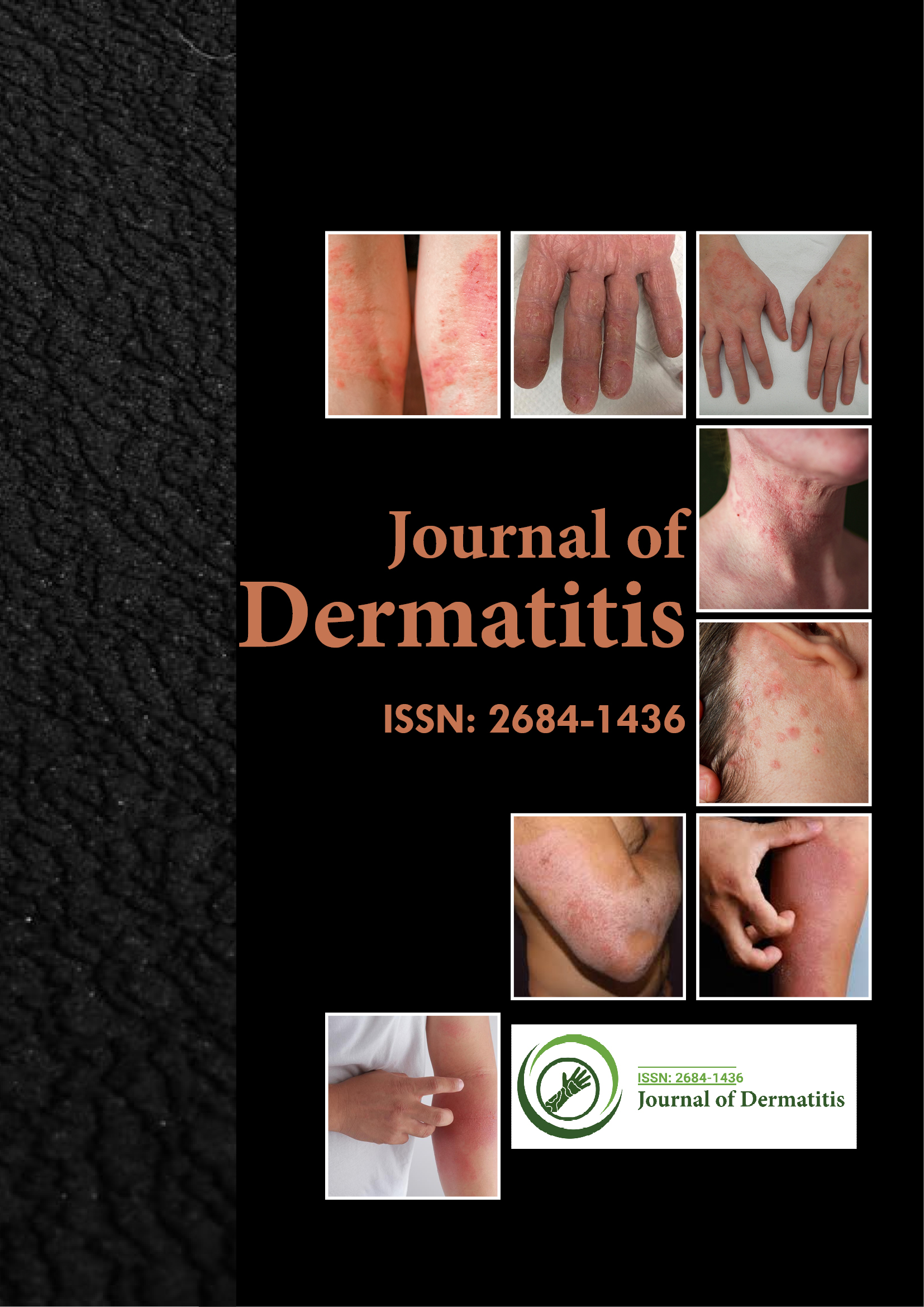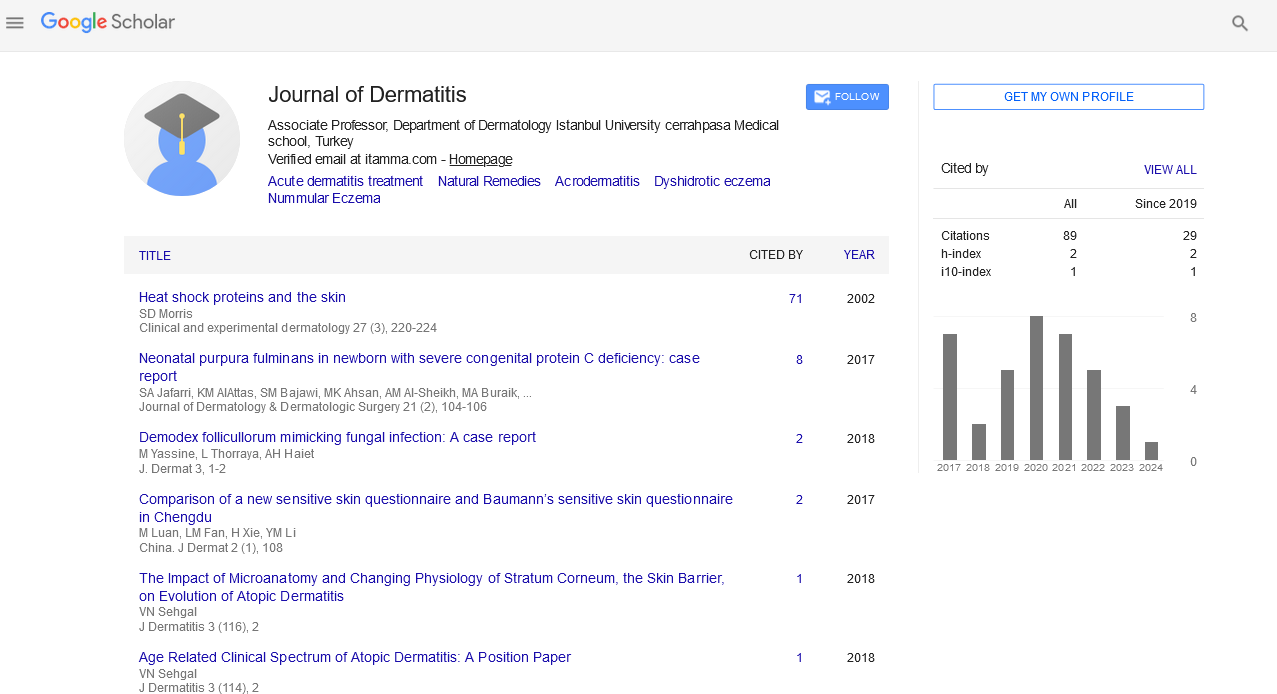Indexed In
- RefSeek
- Hamdard University
- EBSCO A-Z
- Euro Pub
- Google Scholar
Useful Links
Share This Page
Journal Flyer

Open Access Journals
- Agri and Aquaculture
- Biochemistry
- Bioinformatics & Systems Biology
- Business & Management
- Chemistry
- Clinical Sciences
- Engineering
- Food & Nutrition
- General Science
- Genetics & Molecular Biology
- Immunology & Microbiology
- Medical Sciences
- Neuroscience & Psychology
- Nursing & Health Care
- Pharmaceutical Sciences
Perspective - (2022) Volume 7, Issue 6
Clinical and Epidemiologic Features of Erythrodermic Psoriasis
Yousra Sayed*Received: 01-Nov-2022, Manuscript No. JOD-22-19071; Editor assigned: 04-Nov-2022, Pre QC No. JOD-22-19071 (PQ); Reviewed: 18-Nov-2022, QC No. JOD-22-19071; Revised: 25-Nov-2022, Manuscript No. JOD-22-19071 (R); Published: 02-Dec-2022, DOI: 10.35248/2684-1436.22.7.170
Description
Erythrodermic psoriasis is a rare skin condition that causes a red rash to form over most of the body. The rash resembles a burn and can be just as deadly because it can lead to dehydration, fever, and chills. Urgent medical treatment is required for erythrodermic psoriasis.
When body produces new skin cells more quickly than they shed or die, the condition known as psoriasis, a chronic skin condition, results. Cells accumulate on the skin's surface as a result. Thick, itchy skin patches with pink, red, or white scales appear on skin. Although this illness, also known as plaque psoriasis, may be ugly, it poses no risk to our health.
Although erythrodermic psoriasis is a rare form of the disease, it is substantially more severe than most other subtypes. Plaques can nearly completely cover the whole body, which could result in complications that are life threatening.
An estimated 3% of Americans, usually adults, suffer with psoriasis. Plaque psoriasis affects as many as 9 out of 10 patients with psoriasis. The erythrodermic variant of psoriasis is rare, affecting just around 3% of those with the condition.
Plaque psoriasis is present in about 1 in 3 individuals who develop erythrodermic psoriasis. It occurs when our immune system overreacts incorrectly and damages our own body. This reaction generates inflammation, which speeds up the formation of new skin cells.
The greatest risk for developing erythrodermic psoriasis is in those with poorly managed plaque psoriasis. Erythrodermic psoriasis can develop if psoriasis medications, such as corticosteroids or immunosuppressants, are abruptly stopped. Symptoms can also result from excessive use of drugs like retinoids, which are related to vitamin A, and topical steroids.
Some people develop erythrodermic psoriasis after having allergic reaction to a medication, illness or infection, severe sunburn, Stress, Substance use disorder.
In a few of days, erythrodermic psoriasis can develop suddenly (as an acute rash). Plaques typically develop from an existing psoriasis rash. A few months may pass before erythrodermic psoriasis fully develops. On more than 90% of body, we experience redness and inflammation that resembles a severe burn or sunburn. The skin rash is extremely irritating and could feel scorching. Additionally, skin could start to peel off in big sheets. Nail and toenail loss is a problem for some people.
Symptoms of erythrodermic psoriasis might come and go. Treatments can manage the condition and even put it into remission, which results in a minimal or completely absent rash and other symptoms. However, flare-ups might happen, bringing back the diffuse rash and symptoms.
Symptoms of erythrodermic psoriasis may include intense itching or skin soreness. The capacity of the body to regulate body temperature and sweat are both impacted by the rash. The patient might experience hypothermia (low body temperature). Dehydration may result and electrolyte levels may be impacted. Fever, chills, and edoema (fluid retention) in feet and ankles are possible side effects. Infections can happen occasionally, but they are uncommon.
The condition increases our risk for life-threatening problems like Heart failure, Infections like septicemia, which can lead to sepsis, Pneumonia etc.
Conclusion
Erythrodermic psoriasis is a chronic disorder that cannot currently be cured, despite the fact that it can be extremely well controlled with the right treatment. To avoid flare-ups, we must adhere to the skincare and treatment advice of our doctor. Our risk of significant complications and even death is reduced with effective disease management.
Citation: Sayed Y (2022) Clinical and Epidemiologic Features of Erythrodermic Psoriasis. J Dermatitis. 7:170.
Copyright: © 2022 Sayed Y. This is an open-access article distributed under the terms of the creative commons attribution license which permits unrestricted use, distribution and reproduction in any medium, provided the original author and source are credited.

